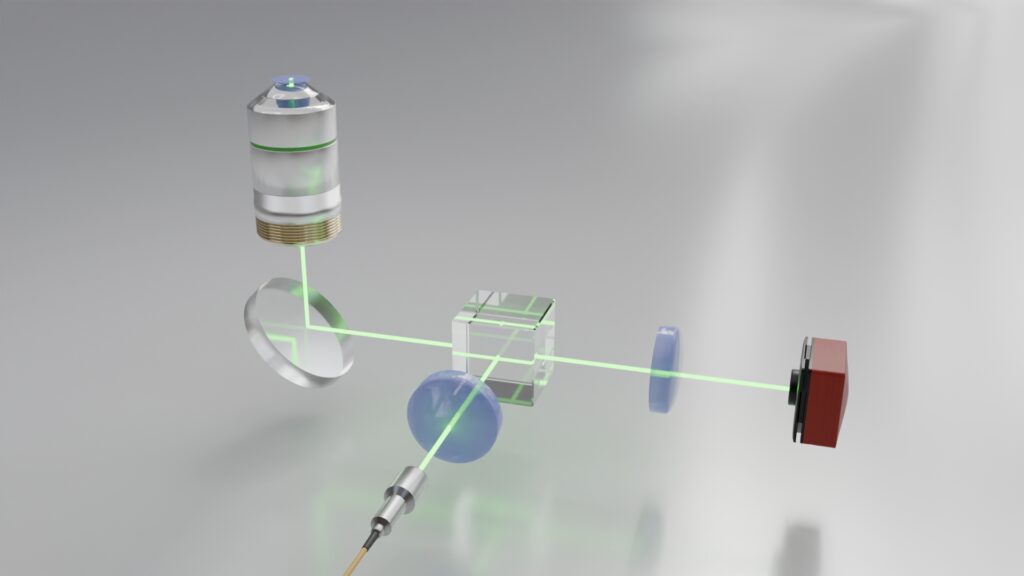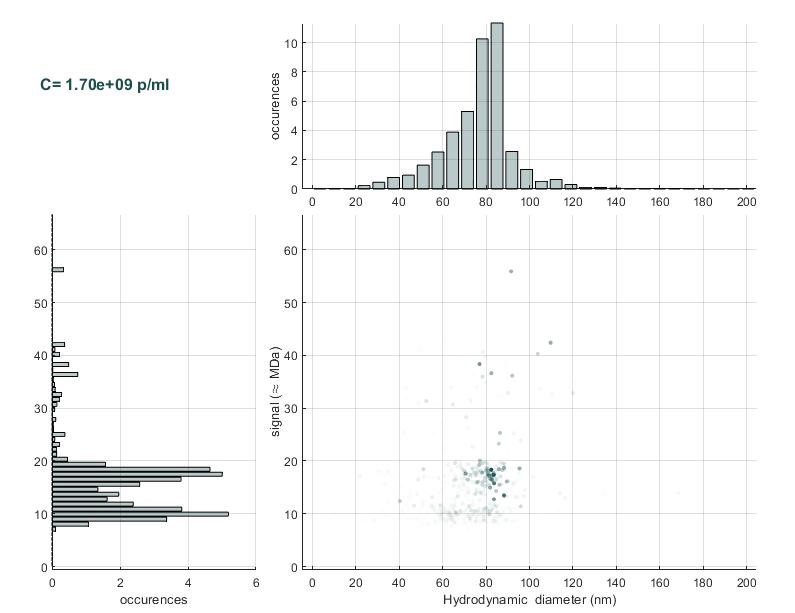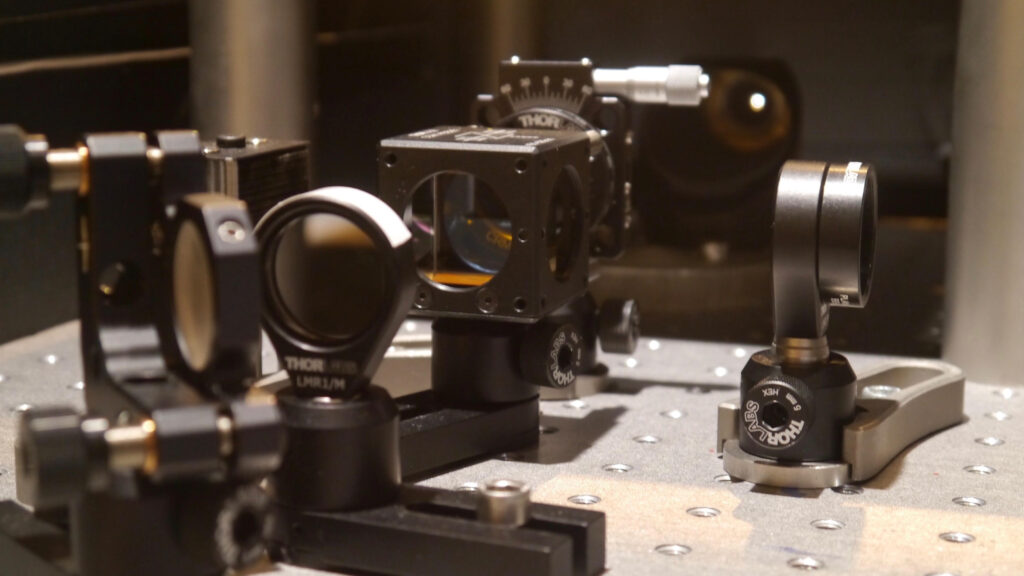20 nm nanoparticle characterization
How to do it optically ?
A custom optical instrument sensitive enough to detect individual 20 nm particles

The first difficulty of 20 nm nanoparticle characterization with an optical instrument is the senstivity one. Common optical instruments are not sensitive enough to detect nanoparticles smaller than 60 nm because they scatter so little light.
To overcome this challenge, we have developped our instrument around a new interferometric microscopy technique. It allows to increase the signal by 4 orders of magnitude. Therefore, it unveils the smallest virus, EVs and LNP you want to work with.
Measure an absolute concentration as well as the mass and size of each of your nanoparticles
Concentration
The definition of concentration is the number of particles per unit volume. Our microscope uses holographic imaging to record 3D images from a small volume within the sample. Our algorithm can explore this volume, count the number of particles and deduce an absolute concentration measurement. Therefore, it does not rely on any assumption associated with the use of indirect measurements.
Mass
Theory of light diffraction states that small nanoparticles (small compared to wavelength i.e., 450 nm) scatter an amount of light proportional to the square of their “polarizability “. Furthermore, this polarizability, for small particles, is proportional to their mass. Therefore, it means that heavier particles scatter more light, and appear brighter on our images.
That is why our software measures the brightness of each nanoparticle and deduces its mass. Finally, the masses are used to build the 2 dimensions mass and hydrodynamic radius distribution.
Size (Hydrodynamical radius)
Every second, 1,000 « 3D snapshots » of individual nanoparticles are generated by our instrument. Our software automatically tracks those particles and reconstructs their trajectory. The analysis of each trajectory enables to derive an hydrodynamic diameter for each particle. Finally, this output is used to build the 2- dimension hydrodynamic diameter distribution.
Quantitative measurements
of vector loading or particle aggregation
Our instrument measures a quantitative concentration, as well as the mass and size distribution of nanoparticles in the sample. Vectors that are full, are heavier than empty vectors. Therefore, they can be distinguished on the mass histogram. With one look on the mass histogram, you can distinguish the full and empty vectors as well as rely on our software to estimate the full/empty ratio


Measure all of your R&D conditions in minutes
Optics is one of the pillars of sensing technologies for biologic production. Indeed, it can simply provide a great deal of information without altering the sample. Our instrument is label free, requires only 5 µL of sample, and takes 5 minutes to produce a result. Simply take a drop of the condition you want to test, put it in the instrument, click play, and get you quantitative result without manual fine tuning of parameter
To learn more about our instrument, visit our product section
